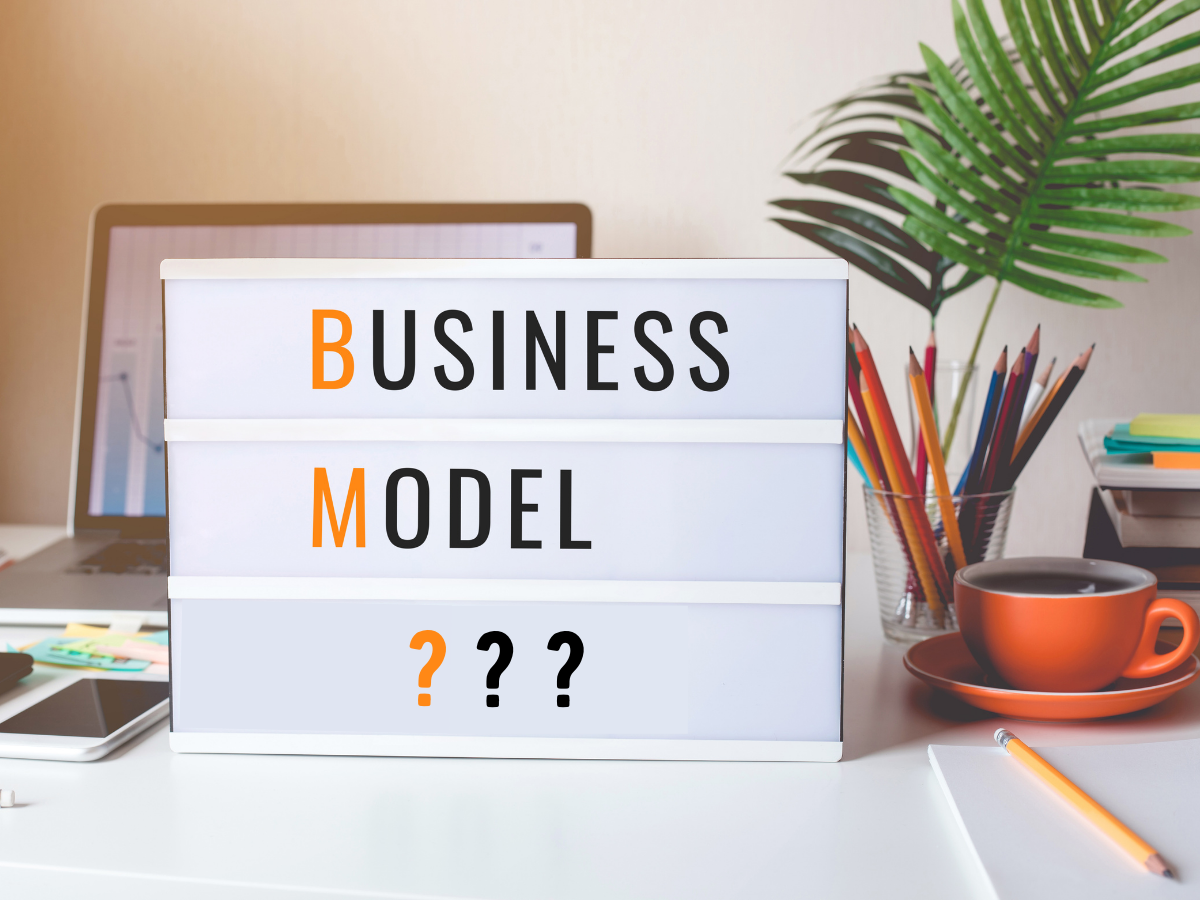Marketing one-to-one versus one-to-many: Which business model will work best for you? How do you decide?
While these are not “official” business models, they are terms commonly used among service-based businesses, such as coaching or consulting organizations. The one-to-one model occurs when a business creates customized solutions tailored to each individual client. In contrast, the one-to-many model allows for less customization, as the service is provided to a group of clients. You might think of it as teaching a class versus tutoring an individual.
While you can charge more per client with the one-to-one model, it is more difficult to scale because each client will require their own block of time. The one-to-many model allows you to serve more clients and makes it easier to scale your business, but the amount you can charge per client is less. Often, a service-based business will begin by assuming a one-to-one model before moving into a beta of a one-to-many model. Then, if the one-to-many model works for them, they can convert their business to use this model instead.
So how do you choose which type of business you want to run? Or, if you already have a one-to-one business in place, how do you know if switching to a one-to-many model is the right decision for you?
 When attempting to answer these questions, it’s best to keep your end goal in mind. What does “success” look like to you? For starters, a business should not be developed solely around a goal of achieving monetary success. In fact, most successful business owners will tell you that monetary success comes from setting and achieving non-monetary objectives. Money is often the tool we use to get us to where we perceive is a better place in our lives, but true success cannot be defined only in terms of monetary value, nor by the accumulation of material goods alone.
When attempting to answer these questions, it’s best to keep your end goal in mind. What does “success” look like to you? For starters, a business should not be developed solely around a goal of achieving monetary success. In fact, most successful business owners will tell you that monetary success comes from setting and achieving non-monetary objectives. Money is often the tool we use to get us to where we perceive is a better place in our lives, but true success cannot be defined only in terms of monetary value, nor by the accumulation of material goods alone.
Instead, envision the life you want to live and what that will look like for you. Then, ask yourself, “What do I require – aside from money – to achieve that life,” and, “In what order must I attain those things?” For example, most of us yearn to have more freedom in our day-to-day lives, but many small business owners do not generate enough income to enjoy the freedom they desire. So first, you need to identify what the aspects of your life are that you want to change or improve, and then you must contemplate how you can best achieve those goals for your future.
Second, you need to consider which business model will work best for your personality type. Some people are extroverts who love the energy that comes from being in a group setting. Other people are introverts; they prefer having deeper, one-on-one conversations, rather than engaging in a group dynamic. Exploring your personality type – in addition to determining what you want your life to look like and what you require to achieve such a life – are the greatest tools you have to help you identify which business model is right for you.
As previously stated, the one-to-many business model is like teaching a classroom as opposed to tutoring a single student. This model may not make sense if you are an introvert. That said, if you have the drive to share a compelling message with the world, or if you’ve already found success with a one-to-one model and want to expand, you can still make a one-to-many model work for your introverted personality. Introverts may desire to take what they’ve learned from the interpersonal experiences of their one-to-one model and turn their business into something that can reach more people. The one-to-many business model can work well for this.
If you are a small service-based business owner or just starting out, the one-to-one model is a good option to consider. The advantage of choosing this model is that you’ll be able to charge more for your time. You can charge higher rates, deliver faster results, and send clients on their way sooner (leaving them better off for knowing you)! One-to-one is also great because it allows you to take ownership of everything your business offers and connect on a deeper level with each of your clients.
The better you get to know your clients, the easier it will be to cultivate long-term relationships with them. You may even have clients who choose to stay with your business forever. When you are willing and able to build meaningful professional relationships, your clients will be more likely to stay with you because you’ve invested the time to actually get to know them. Building trust-based relationships will also help you deliver the best possible results — a crucial component of any successful business!
 Another positive aspect of the one-to-one model is that it’s great for people who want to be paid hourly or prefer a flat consulting rate. It can also be good for a business selling products that require a high level of customization. Some examples include businesses that develop customized apps or design custom-built furniture. The benefit is that one-to-one businesses can charge a high rate from the start and grow revenue quickly.
Another positive aspect of the one-to-one model is that it’s great for people who want to be paid hourly or prefer a flat consulting rate. It can also be good for a business selling products that require a high level of customization. Some examples include businesses that develop customized apps or design custom-built furniture. The benefit is that one-to-one businesses can charge a high rate from the start and grow revenue quickly.
Though a one-to-one business model is a great way to start a service-based business, if your business creates and sells products, the one-to-one model probably won’t be as lucrative. Businesses that sell products tend to be in a one-to-many business model unless they choose to add a personal consulting component to what they’re selling. On the other hand, product-based businesses may develop one-to-one connections to try to sell their products through home shows or different multi-level marketing models. In that case, they are building the business in a one-to-one way, but ultimately, they are still using a one-to-many business model.
I began my PR agency, Prosper for Purpose, using the one-to-one business model. Prosper provides services in the categories of branding, marketing, and PR for changemakers and purpose-driven entrepreneurs. We work with companies, nonprofits and even some government agencies. The one-to-one model has proved to be a great way to work directly with our clients. Writing for clients and working with the media to earn publicity for our clients was the core of my business for seven years, but what I realized in 2020 is that I could take the one-to-one business I initially began and build a program that uses a one-to-many model.
Every client is unique, but it’s important to have a framework in place so that you don’t need to reinvent your business every time you work with a different organization. My idea was to take the framework I developed and teach it to other business owners. In April of 2020, I launched the Peerless Entrepreneur program, teaching groups of entrepreneurs how to build their branding and marketing strategies, taking the process I was initially using in my one-to-one client work and using it to reach a wider demographic. I started the program for small business owners who wanted help navigating marketing during lockdown, to build an online brand so they could scale up to the next level. At the same time, I was serving my one-to-one agency clients.
I’ve found that I really enjoy the hybrid model. I like being able to serve entrepreneurs who need help building their brand, creating the right marketing program and earning publicity for their business through the Peerless Entrepreneur program. And I love my agency clients who come for strategic consulting and customized plans. Because of them, I get to engage in creative campaigns that help my clients transform people’s ways of thinking or develop innovative tools that can change the world for the better.
This is just one example of how these two different business models can actually coexist. If you are providing your clients one-to-one services, it could be a natural next step to add a one-to-many aspect in which you develop a program or course. Considering a hybrid model is also a way to grow revenue. And eventually, you may be someone who limits or even eliminates the one-to-one service.
That said, adding a new line of business requires time and resources. For example, opening a bakery requires different skills than working as a baker, and creating a program that teaches others to bake requires still another set of skills. You should be prepared to invest some time and money any time you change or add a new line of business. An investment may mean that you need a coach or a consultant, at first, to help you figure out your marketing, finances or PR strategy. It may even mean that you need an assistant — someone who can take over some of your day-to-day tasks like scheduling, responding to general emails, etc. How one invests in their business will look different for each person, but it’s imperative to do so. Every time I have taken my business to the next level, I have invested first.
 Think about where you are now and how the one-to-one model or the one-to-many model could serve you and the life you wish to lead. Remember that in order to grow, you need to step out of your comfort zone. You need to bet on yourself, and betting on yourself means investing in your business.
Think about where you are now and how the one-to-one model or the one-to-many model could serve you and the life you wish to lead. Remember that in order to grow, you need to step out of your comfort zone. You need to bet on yourself, and betting on yourself means investing in your business.
When adding a one-to-many aspect to an existing one-to-one business, you will notice that the one-to-many model will not feel as personal. If people are seeing Facebook ads, receiving an email blast, or viewing a public livestream, they know the interaction is targeting a group. Sometimes an ad may have a target audience, but you don’t know specifically who is engaging with it.
On the contrary, when working with smaller groups, you will still have the opportunity to get to know people. How personal your interactions are while using a one-to-many approach will depend on the platform you use, but it will never be as personal as a one-to-one model. One-to-many models are often very tech reliant, so a business needs to have special marketing strategies and tactics that can help it appeal to an audience. Yet, the benefit is that it takes less time to reach more people, so you can build a more reliable revenue stream over time while impacting more individuals.
If you want to reach more people with your message, but aren’t ready to add a course or program, there are other options. The one-to-many model is also beneficial when it comes to e-books or recurring product shipments, for example. If the one-to-many approach appeals to you, ask yourself, “What can I set up that will allow me to have recurring revenue? Is there a way to get people to pay a fee each month in exchange for certain products or results?” If you are selling products, think of some kind of membership or service that could build a wider audience. Maybe you can sell a subscription where you deliver a product on a monthly basis. This actually also works for a service-based business that wants to sell info products.
Service-based business owners may want to offer a private group, either on Facebook or another platform, where they join monthly webinars or bi-weekly classes. Or you may deliver your subscription through email or text messaging. Think about how a component of your one-to-one model could actually be taught to other people to help them build their health, wealth or relationships. The only thing that can limit you in ideating how a hybrid model can work for your business is your own imagination.
-Lorraine Schuchart

LEAVE A COMMENT
Comments